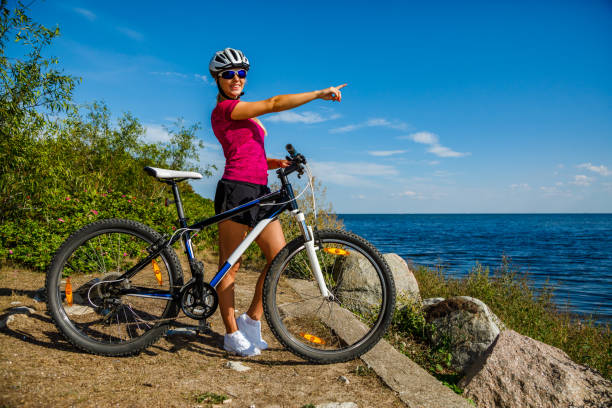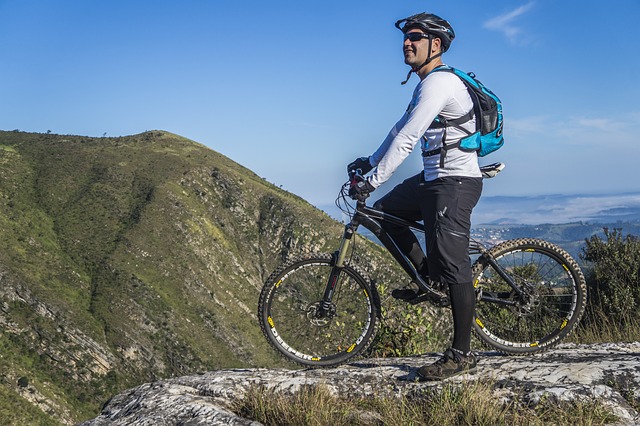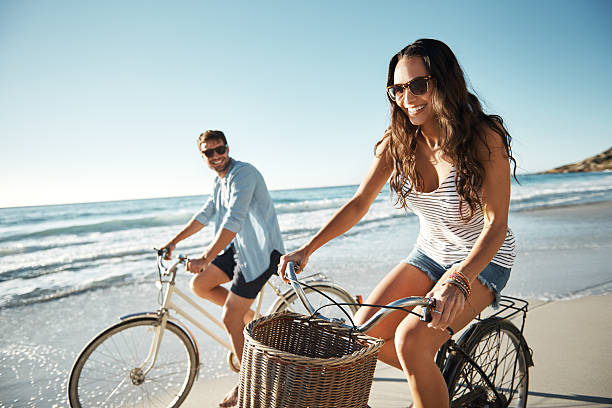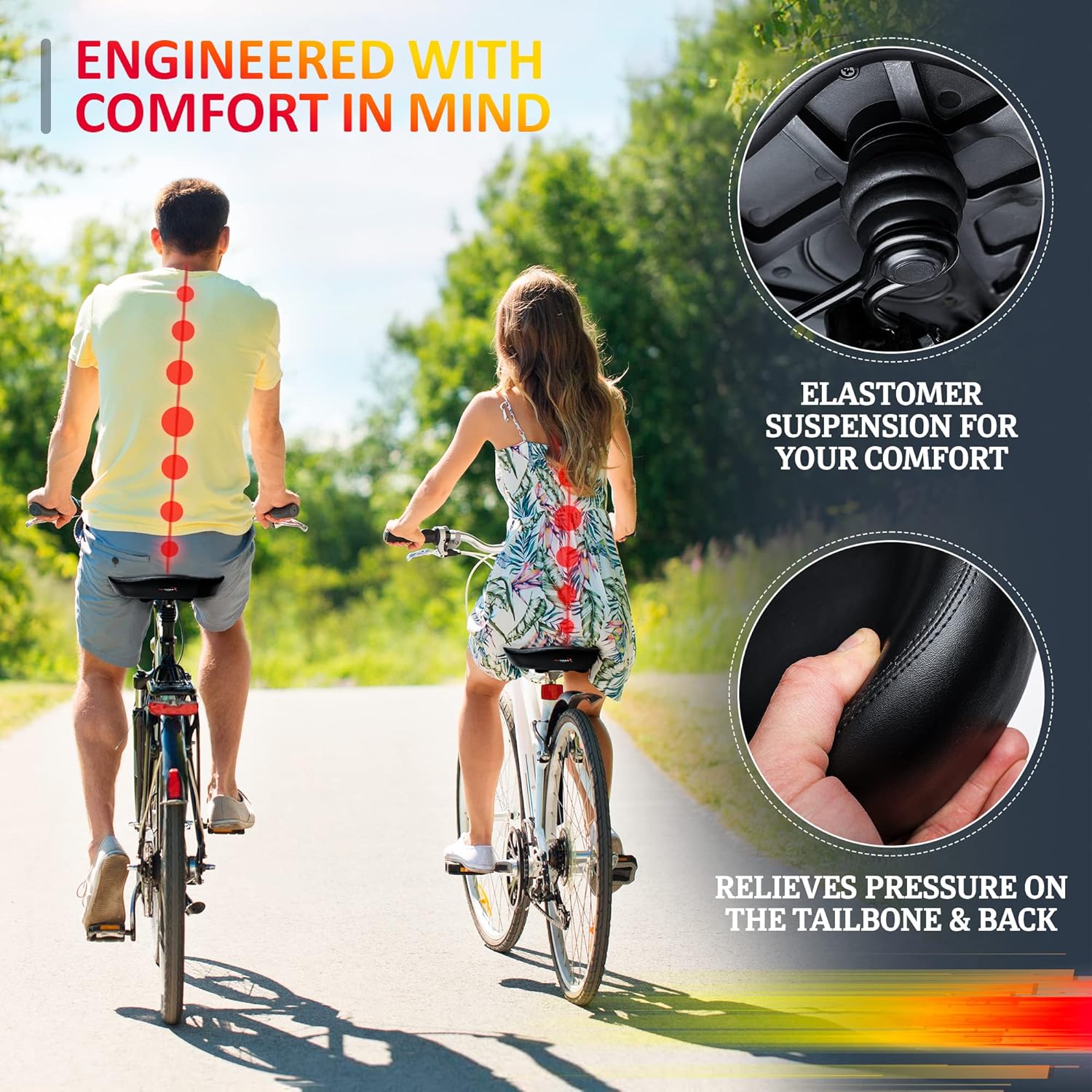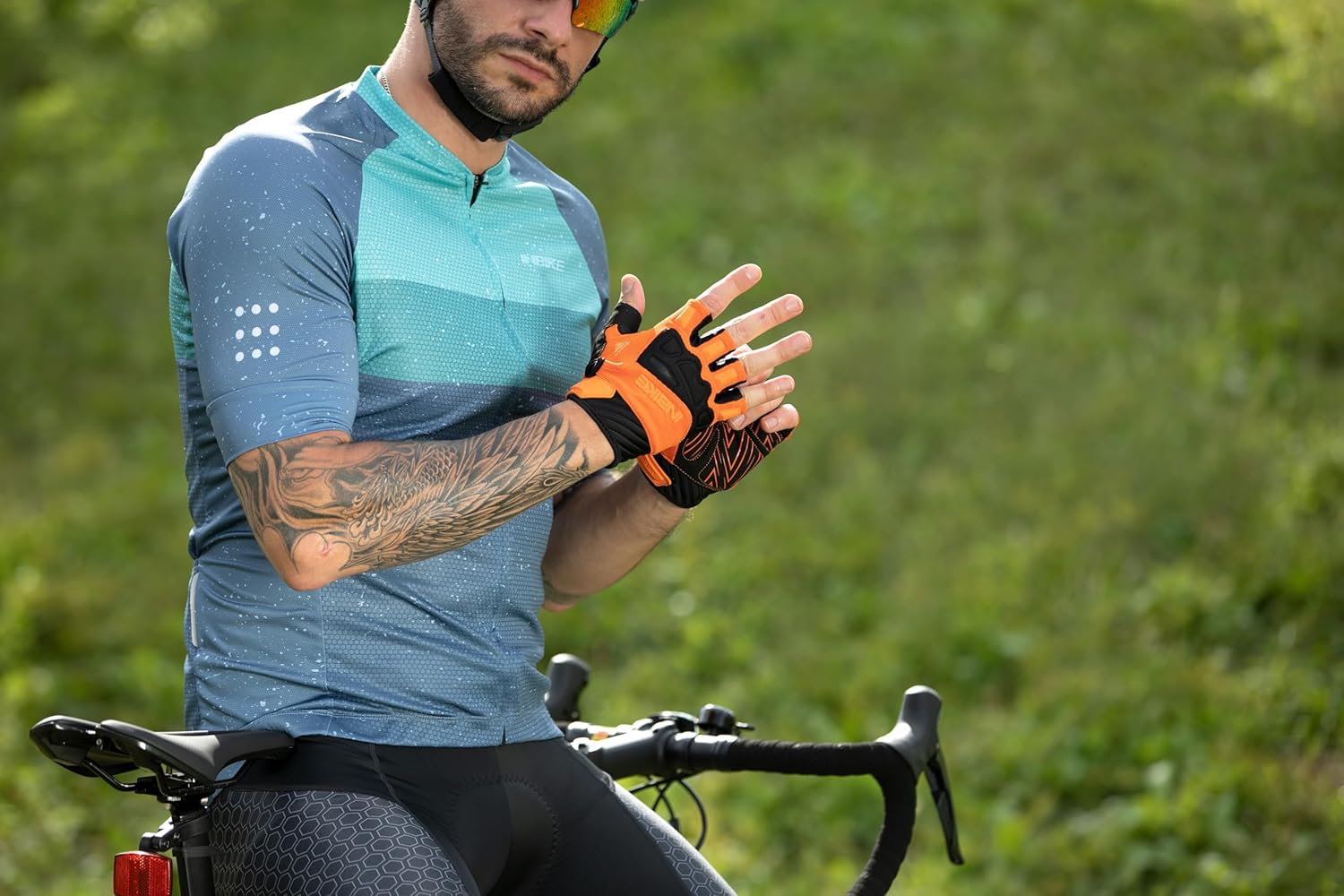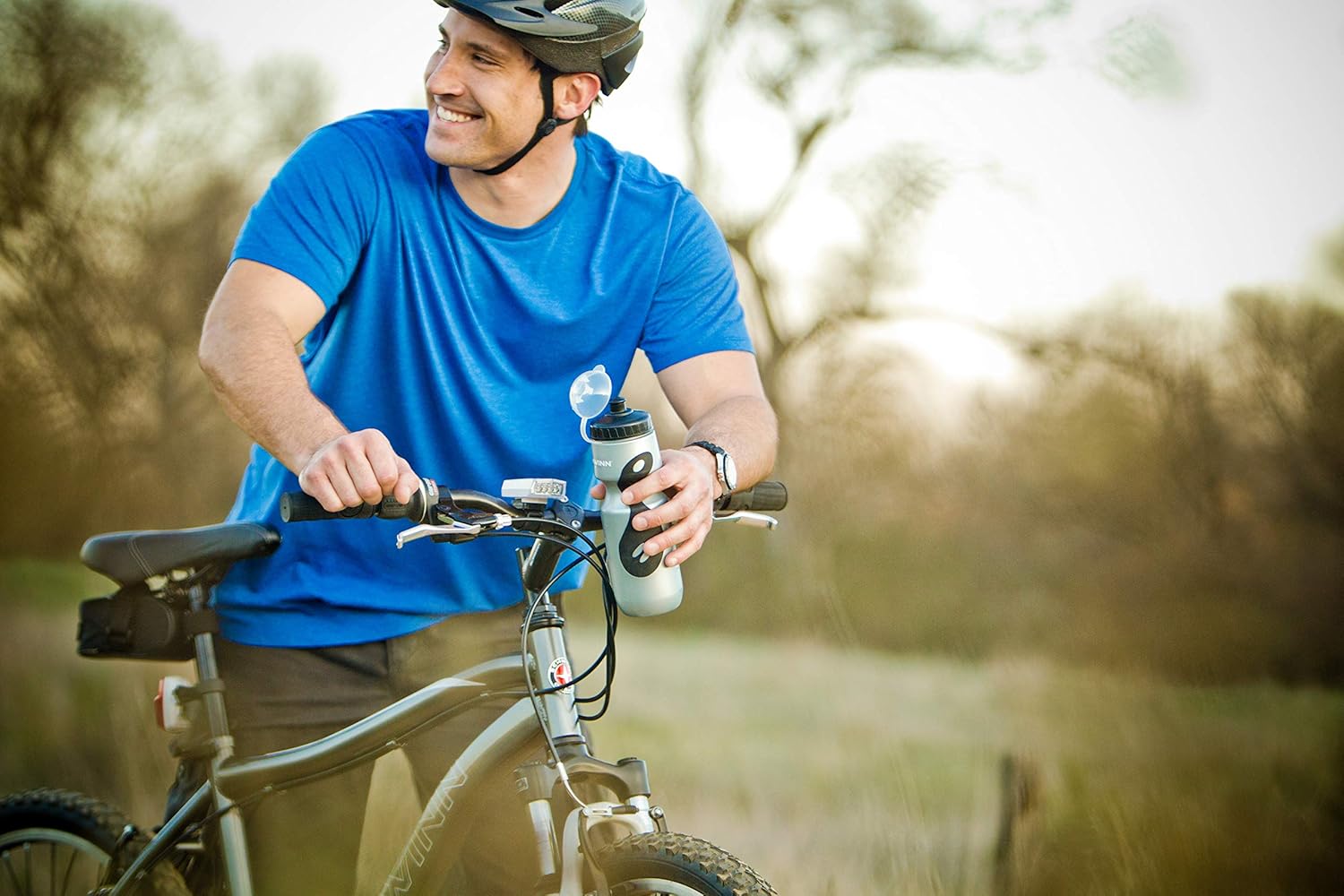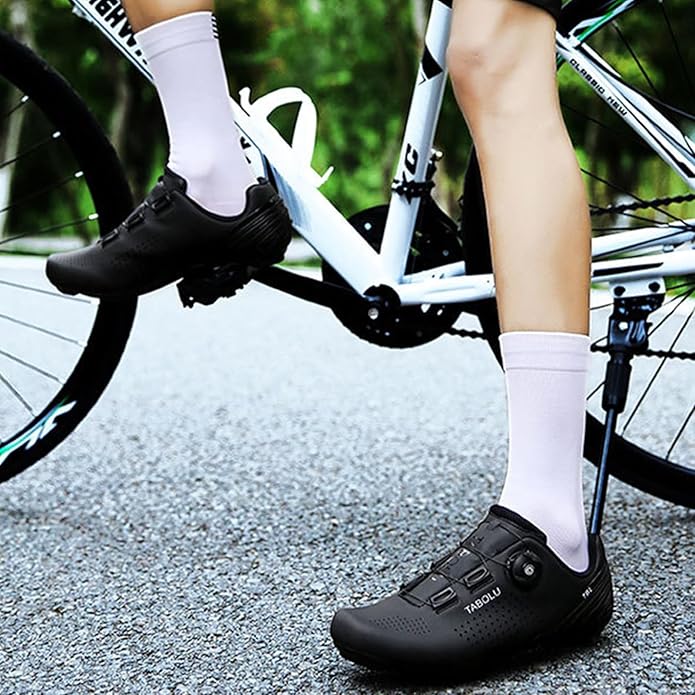Introduction
Single-gear bicycles are the most precious things for all bicycle lovers. Embarking on an off-road journey is an enjoyable way to connect with nature, explore new adventures, and create your cycling skills. This single-gear bicycle is designed specifically for versatility and comfort. Most of the time men and women use the single gear bicycle because of their comfort and durability. This guide aims to introduce you to the best single-gear bicycles available on the market today. These single-gear bicycles provide a smooth and enjoyable experience.
For this reason, you can choose the right single-gear bicycles for your bicycle journey. In this guide, we’ll explore the key features to look for in single-gear bicycles and highlight the best options available to help you achieve your cycling goals. For this reason, we provide them with a list of stylish single-gear bicycles. You should read the article and visit our website for more information. Let’s go through and discover how the right road bicycle shoes can transform your cycling adventures!
What is a Single Gear Bicycle?
A single-gear bicycle, commonly known as a single-speed bike, is designed with a single-gear ratio, meaning it has no additional gears to shift through while riding. This straightforward design simplifies the cycling experience, making it ideal for riders who prioritize ease of use and low maintenance.
Key Characteristics
- Single Equip Framework: As the title infers, a single-gear bike works on one adapt proportion.
- This means the bike has one chainring in the front and one cog in the rear, providing a direct connection between the pedals and the wheels.
- Lightweight Design: With fewer components than multi-gear bikes, single-gear bicycles tend to be lighter. This makes them easier to maneuver, transport, and store, appealing to urban commuters and casual riders alike.
- Minimal Maintenance: The absence of complex gearing systems means fewer parts to maintain. Riders benefit from reduced upkeep and fewer potential mechanical issues, making single-speed bikes a practical choice for those who prefer hassle-free cycling.
Comparison with Multi-Gear Bicycles
Unlike multi-gear bicycles, which offer a range of gear ratios to accommodate various terrains and riding styles, single-gear bicycles focus on simplicity. While multi-gear bikes can be beneficial for climbing steep hills or tackling diverse terrains, single-speed bikes shine in flat urban environments, where shifting gears is often unnecessary.
Benefits of Single-Gear Bicycles
- Simplicity: With no shifters or derailleurs, single-gear bicycles are straightforward to operate. Riders can focus on enjoying the ride rather than managing gear changes.
- Cost-Effective: Generally, single-gear bikes are more affordable than their multi-gear counterparts, both in terms of initial purchase price and long-term maintenance costs.
- Versatility: While best suited for flat terrains, many riders appreciate the versatility of single-speed bikes for short commutes, leisurely rides, and even urban racing.
In summary, single-gear bicycles represent a minimalist approach to cycling, appealing to those who enjoy the simplicity and freedom that comes with riding without the complexities of multiple gears.
Why Choose a Single Gear Bicycle?
Single-gear bicycles, or single-speed bikes, offer a unique set of advantages that cater to a specific type of rider. Here are some compelling reasons to consider opting for a single-gear bicycle:
1. Simplicity and Ease of Use
One of the most significant benefits of a single-gear bicycle is its straightforward design. With no gears to shift through, riders can focus solely on the enjoyment of cycling. This simplicity makes it an excellent choice for beginners or anyone who prefers a hassle-free riding experience.
2. Lower Maintenance Requirements
With fewer components than multi-gear bikes, single-gear bicycles require less maintenance. There are no derailleurs, shifters, or extra cogs to worry about, which means fewer potential mechanical issues. This not only saves time and money but also provides peace of mind for riders who want to avoid frequent tune-ups.
3. Lightweight Design
Single-speed bicycles are by and large lighter than their adapted partners, making them simpler to move and transport. This can be particularly beneficial for urban cyclists who need to navigate busy streets or carry their bikes upstairs. A lightweight bike can enhance your overall riding experience, making each pedal stroke feel more efficient.
4. Cost-Effectiveness
Typically, single-gear bicycles come with a lower price tag compared to multi-gear bikes. The reduction in complexity means manufacturers can produce them more economically. Additionally, the long-term savings on maintenance further enhance their appeal, making them a budget-friendly option for many riders.
5. Ideal for Urban Commuting
Single-gear bicycles excel in flat urban environments where frequent gear changes are unnecessary. For city commuters, they provide a straightforward solution to getting from point A to point B quickly and efficiently. Riders can appreciate the smooth increasing speed and a more coordinated control exchange from pedals to wheels.
6. Enhanced Control and Responsiveness
Without the distractions of gear shifting, riders often find that single-gear bicycles offer improved control and responsiveness. This can be especially advantageous in crowded urban settings, where quick decisions and maneuvers are often required.
7. Eco-Friendly Choice
Fewer mechanical parts mean less waste over time, making single-gear bicycles an eco-friendly option. Additionally, their straightforward design often encourages more people to cycle, promoting a healthier, more sustainable mode of transportation.
In summary, choosing a single-gear bicycle can provide an array of benefits, particularly for those who value simplicity, low maintenance, and cost-effectiveness. Whether you’re commuting in the city or enjoying a casual ride, a single-speed bike can enhance your cycling experience while allowing you to enjoy the freedom of the open road.
Key Features to Look for The Best Single-Gear Bicycle.

When choosing a single-gear bicycle, there are several key features to consider that can enhance your riding experience. Here’s what to look for:
1. Frame Material
The frame is the backbone of any bicycle, and choosing the right material is crucial for performance and durability. Common options include:
- Aluminum: Lightweight and resistant to corrosion, aluminum frames are ideal for urban riders seeking speed and agility.
- Steel: Known for its strength and durability, steel offers a comfortable ride due to its natural flex, making it great for long distances.
- Carbon Fiber: While typically more expensive, carbon fiber frames are incredibly lightweight and offer excellent vibration dampening.
2. Wheel Size
The measure of the wheels can essentially influence your riding experience:
- 26 inches: Offers greater maneuverability and is often found on mountain-style single-gear bikes.
- 27.5 inches: A balance between speed and control, suitable for a variety of terrains.
- 700c: Commonly found on road and commuter bikes, this size provides a smooth ride on paved surfaces.
3. Braking System
Choosing the right braking system is essential for safety and performance:
- Rim Brakes: Lightweight and easy to maintain, rim brakes are a common choice for single-speed bikes, though they may be less effective in wet conditions.
- Disc Brakes: Offering superior stopping power, especially in varied weather conditions, disc brakes can be a great investment for more serious riders.
4. Comfort Features
Consider the bike’s design and comfort features to ensure an enjoyable ride:
- Geometry: A well-designed frame geometry can make a significant difference in comfort. Look for a geometry that suits your riding style—upright for casual rides or more aggressive for speed.
- Saddle: The saddle should provide comfort and support for your riding style. Test different shapes and materials to find the best fit for you.
- Grips and Handlebars: Comfortable grips and handlebars can reduce fatigue during longer rides. Look for ergonomic plans that upgrade control.
5. Tires
Tires are significant for execution, hold, and comfort:
- Width: Wider tires offer more stability and comfort, while narrower tires provide speed and efficiency. Choose based on your riding conditions.
- Tread Design: Consider the landscape you’ll be riding on. Smooth tires are perfect for asphalt, whereas more forceful tread designs give footing on rougher surfaces.
6. Accessories and Customization Options
Many single-gear bicycles come with or allow for various accessories to enhance functionality:
- Fenders: Protect you from mud and water, making your rides more comfortable in inclement weather.
- Racks and Panniers: Useful for carrying gear or groceries, especially if you plan to use your bike for commuting.
- Lights and Reflectors: Essential for safety, particularly if you’ll be riding in low-light conditions.
7. Gear Ratio
Though single-speed bikes have only one gear, the gear ratio can impact your riding style:
- Higher Ratios: Allow for faster speeds on flat terrain but can make climbing hills more challenging.
- Lower Ratios: Offer better control on inclines but may limit speed on flat surfaces. Choose a ratio that aligns with your typical riding conditions.
8. Weight
While single-gear bicycles are generally lightweight, it’s still essential to consider the overall weight for ease of handling and transport. A lighter bike can enhance acceleration and responsiveness, making it a more enjoyable ride.
In summary, When selecting a single-gear bicycle, focusing on these key features will help you find the perfect match for your riding style and needs. Whether you prioritize comfort, performance, or style, a well-chosen single-speed bike can enhance your cycling experience and provide years of enjoyable rides.
Top 5 Best Single Gear Bicycles.
Choosing the right single-gear bicycle can greatly enhance your cycling experience. Here are our top five picks for the best single-gear bicycles currently on the market, each offering unique features and benefits to cater to different riding styles and preferences.
1. State Bicycle Co. 4130 Fixed best single-gear bicycles.
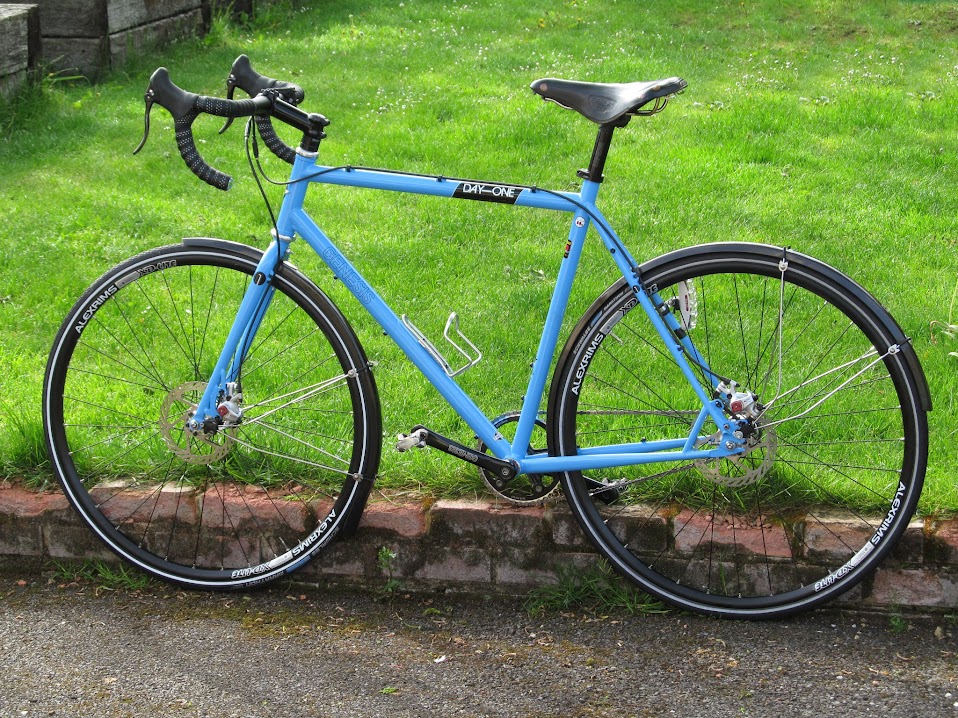
Overview: The State Bicycle Co. 4130 is a versatile and stylish option that combines durability with a classic design. Made with a high-tensile steel frame, it’s both robust and lightweight.
- Specifications:
- Frame Material: 4130 Chromoly Steel
- Wheel Size: 700c
- Braking System: Front brake (optional rear brake)
- Pros:
- Smooth ride quality and excellent handling
- Customizable with various color options and accessories
- Suitable for both commuting and recreational riding
- Cons:
- Limited gearing options for steep hills
2. Fyxation Pixel 7-Speed best single-gear bicycles.
![]()
Overview: Although it features a 7-speed option, the Fyxation Pixel can be used as a single-speed by simply locking out the gears. It’s designed for urban commuting and has a sleek, modern aesthetic.
- Specifications:
- Frame Material: Aluminum
- Wheel Size: 700c
- Braking System: Front and rear disc brakes
- Pros:
- Lightweight and durable design
- Comfortable geometry for city riding
- Excellent braking performance
- Cons:
- May be overkill for those strictly wanting a single-speed
3. Sixthreezero EVRYjourney’s best single-gear bicycles.
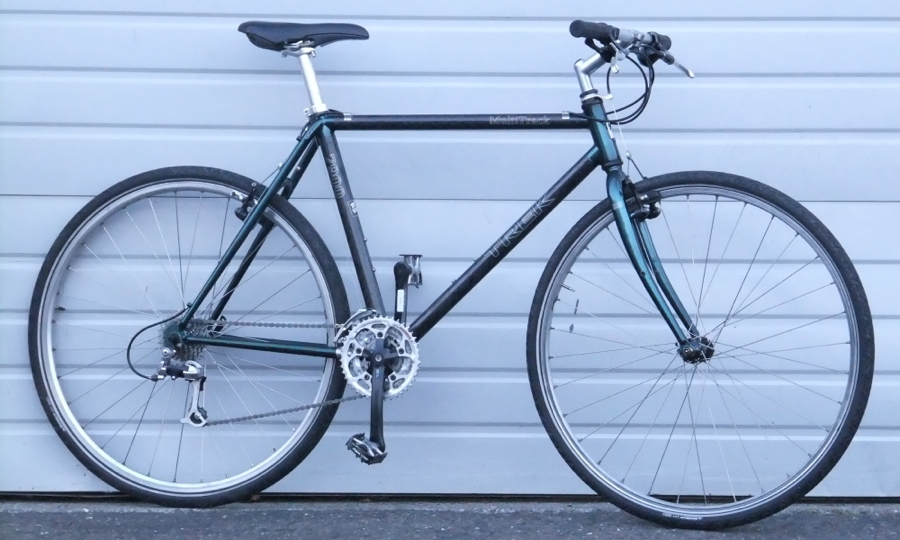
Overview: Ideal for leisurely rides, the Sixthreezero EVRYjourney blends vintage style with modern comfort. This bike is perfect for cruising along the beach or through the park.
- Specifications:
- Frame Material: Aluminum
- Wheel Size: 26”
- Braking System: Front and rear handbrakes
- Pros:
- Comfortable, upright riding position
- Stylish design with multiple color options
- Easy to ride and handle
- Cons:
- Not suitable for steep hills or fast speeds
4. Pure Cycles Classic Fixed best single-gear bicycles.
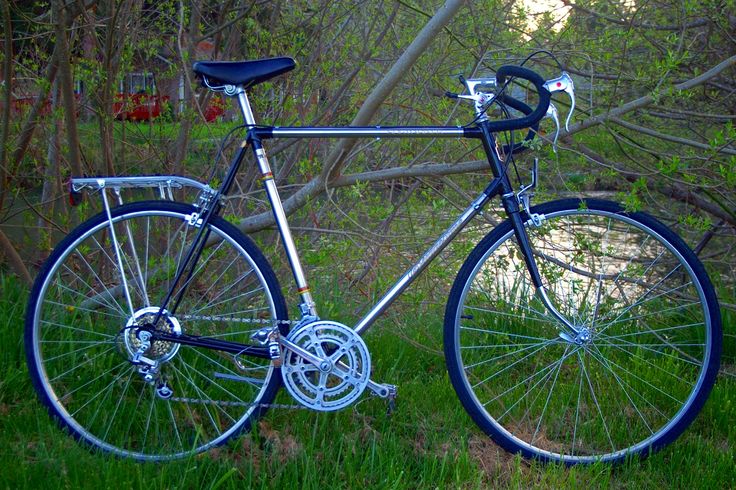
Overview: The Pure Cycles Classic Fixed Gear Bike offers a minimalist design with high-quality components, making it an excellent choice for both beginners and experienced riders.
- Specifications:
- Frame Material: Steel
- Wheel Size: 700c
- Braking System: Flip-flop hub for fixed/freewheel
- Pros:
- Great aesthetic appeal with classic styling
- Lightweight yet sturdy construction
- Easy to customize and upgrade
- Cons:
- Limited gearing can be challenging on inclines
5. Bianchi Pista’s best single-gear bicycles.

Overview: The Bianchi Pista is a high-performance track bike that excels on the streets as well. Known for its quality craftsmanship and iconic design, it’s perfect for riders who value speed and style.
- Specifications:
- Frame Material: Aluminum
- Wheel Size: 700c
- Braking System: Single front brake
- Pros:
- Lightweight and aerodynamic design
- Responsive handling and acceleration
- Timeless Bianchi aesthetics
- Cons:
- Less comfortable for long rides compared to cruiser-style bicycles
In summary, Choosing the right single-gear bicycle depends on your riding style, preferences, and intended use. Whether you’re commuting through the city, enjoying leisurely rides, or seeking speed and performance, one of these top five options is sure to meet your needs. Happy cycling!
Tips for Choosing the Best Single-Gear Bicycle.
Selecting the perfect single-gear bicycle can enhance your riding experience significantly. Here are a few important tips to offer assistance you make the right choice:
1. Assess Your Riding Style
Consider how and where you plan to ride. Are you commuting in the city, cruising along bike paths, or tackling light trails? Your riding environment will influence the type of bike you need. For flat urban areas, a basic single-speed bike may suffice, while those looking for a bit more versatility might opt for a model that can handle mixed terrains.
2. Frame Size and Fit
Finding the right outline estimate is significant for consolation and productivity. A bike that fits you well will allow for better control and reduce fatigue. Most brands offer estimate charts based on stature and inseam measurements. If possible, test-ride different sizes to find the one that feels best.
3. Material Matters
The frame material can significantly impact the bike’s weight, durability, and ride quality. Consider the following options:
- Aluminum: Lightweight and corrosion-resistant, ideal for city commuting.
- Steel: Offers durability and a smoother ride but may be heavier.
- Carbon Fiber: Extremely light and strong, but usually at a higher price point.
4. Wheel Size and Type
Wheel size affects handling, speed, and comfort. Common sizes include 26″, 27.5″, and 700c. Larger wheels (like 700c) generally roll faster on pavement, while smaller wheels provide better maneuverability. Choose based on your riding terrain and personal preference.
5. Braking System
Choose a braking system that suits your riding conditions:
- Rim Brakes: Lightweight and easier to maintain but may be less effective in wet conditions.
- Disc Brakes: Offer superior stopping power, particularly in varied weather. They can be an extraordinary venture for security and reliability.
6. Comfort Features
Look for features that enhance comfort during rides:
- Saddle: Test different saddle shapes and materials to find what feels best for you.
- Handlebars: Consider the handlebar style (drop, flat, or riser) that allows for a comfortable grip and riding position.
- Geometry: Ensure the bike’s geometry suits your preferred riding style, whether that’s upright for leisurely rides or more aggressive for speed.
7. Consider Gearing Options
While single-gear bikes typically have a gear ratio, some models come with a flip-flop hub, allowing you to switch between fixed gear and freewheel. This can offer a bit more versatility depending on your preferences.
8. Check for Accessories and Customization
Look for bikes that allow you to add accessories like fenders, racks, and lights. These can enhance the functionality of your bike, especially if you plan to use it for commuting or touring.
In summary, Choosing the right single-gear bicycle involves considering your riding style, comfort, and budget. By following these tips and doing thorough research, you can find a bike that perfectly fits your needs and enhances your cycling experience. Happy riding!
Maintenance Tips for the Best Single-Gear Bicycles.
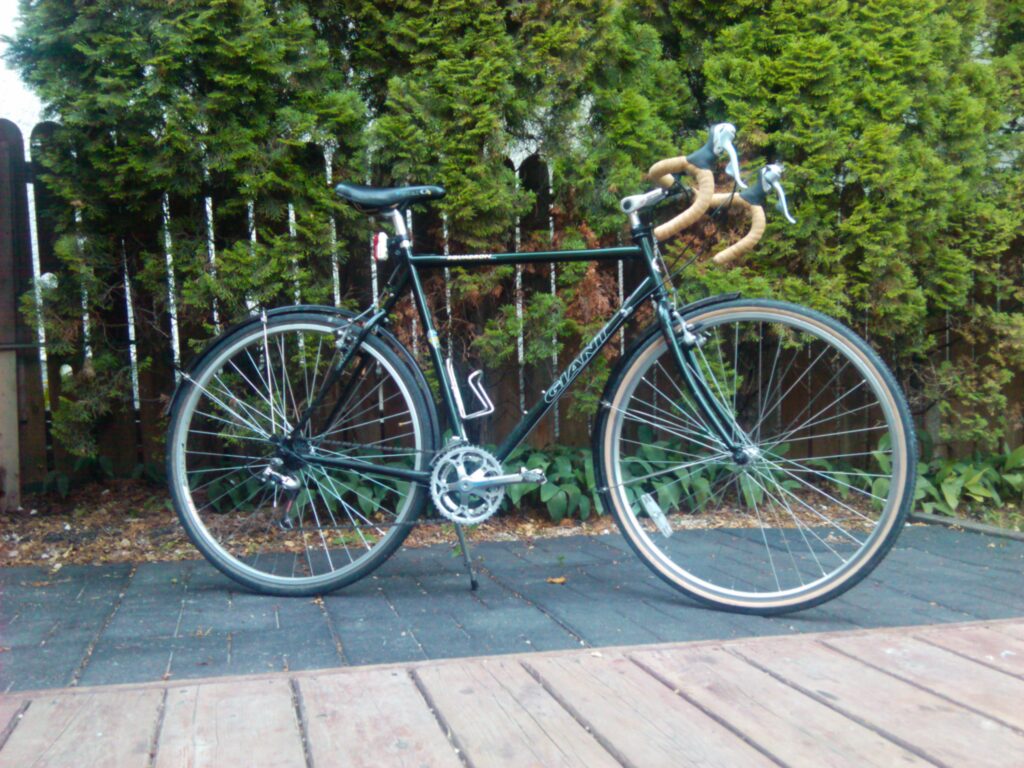
Maintaining your single-gear bicycle is essential for ensuring a smooth, safe, and enjoyable ride. With fewer components than multi-gear bikes, single-speed bicycles are generally easier to care for, but they still require regular attention. Here are a few common upkeep tips to keep your bicycle in the best condition:
1. Regular Cleaning
Keeping your bike clean is fundamental to its longevity. Dirt and grime can cause wear and tear on components, leading to potential issues down the line.
- Wash the Frame: Use mild soap and water to clean the frame, wheels, and components. Avoid utilizing a weight washer, as it can drive water into delicate areas.
- Clean the Chain: Wipe down the chain with a clean cloth to remove dirt. For a deeper clean, use a chain cleaner tool or degreaser, then rinse and dry thoroughly.
2. Lubricate Moving Parts
Proper lubrication is key to a well-functioning bike:
- Chain: After cleaning, apply a quality bike chain lubricant. Wipe off any abundance to avoid drawing in dirt.
- Brakes and Cables: Apply a few drops of lubricant to the brake pivots and cable housing to ensure smooth operation.
3. Check Tire Pressure
Maintaining appropriate tire weight is vital for execution and safety:
- Inflate Tires: Check the recommended pressure (usually printed on the tire sidewall) and inflate your tires as needed. Appropriately swelled tires move forward taking care of and decreasing the chance of flats.
4. Inspect the Brakes
Even single-speed bikes should have functioning brakes for safety:
- Brake Pads: Check the wear on brake pads and replace them if they’re worn down. Ensure they align properly with the rims.
- Cables: Inspect brake cables for fraying or damage. Replace them if necessary.
5. Examine the Wheels
Regular wheel maintenance can prevent issues:
- True the Wheels: Spin the wheels to check for any wobbles. If you notice any, they may need to be tried by a professional or adjusted using a spoke wrench.
- Check Spokes: Look for loose or broken spokes, and tighten or replace them as needed.
6. Monitor the Chain and Gearing
Although single-gear bikes have a straightforward drivetrain, it’s still important to keep an eye on these components:
- Chain Wear: Check for chain wear using a chain checker tool. Replace the chain if it’s stretched to prevent damage to the chainring or cog.
- Cog and Chainring: Inspect for any wear or damage. Replace them if they appear as noteworthy signs of wear.
7. Storage Considerations
Proper capacity can altogether draw out your bike’s lifespan:
- Indoor Storage: Whenever possible, store your bike indoors to protect it from the elements.
- Covering: If putting away the exterior, utilize a bicycle cover to shield it from rain and sun exposure.
8. Regular Inspections
Make a habit of conducting regular inspections to catch potential issues early:
- Visual Checks: Look for any loose components, unusual noises, or signs of wear.
- Test Ride: Take your bike for a short ride to ensure everything is functioning smoothly, paying attention to brakes and handling.
9. Professional Tune-Ups
Even with minimal maintenance, consider taking your bike to a professional mechanic for a tune-up periodically:
- Annual Tune-Up: A professional can conduct a thorough inspection, adjust components, and identify issues you might miss.
- Repairs: If you encounter any problems beyond basic maintenance, seek professional help to ensure safe riding
Frequently Asked Questions
Can I ride a single-gear bike in various weather conditions?
Yes, but be cautious in steep or slippery situations, as the single gear may limit your ability to adjust to different terrains.
Who should choose a single-gear bike?
Ideal for urban commuters, casual riders, and those seeking a simple, hassle-free biking experience.
Which brands offer the best single-gear bicycles?
Popular brands include Schwinn, Brooklyn Bicycle Co., and State Bicycle Co., known for their quality and variety in single-speed models.
Conclusion
Choosing the right single-gear bicycle is essential for enhancing your cycling experience. Single-gear bicycles ensure safety and provide peace of mind. By understanding your needs, evaluating key features, and following proper installation and maintenance practices. you can select a tracker that best suits your lifestyle.
If you need any information on the best road bikes for beginners please click here.




